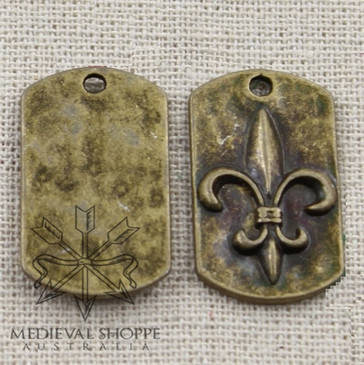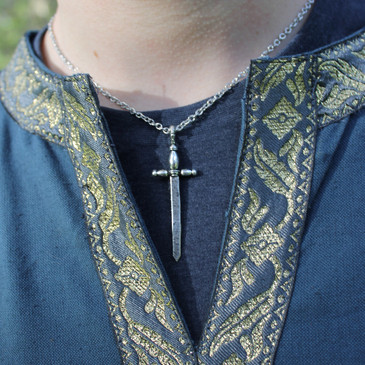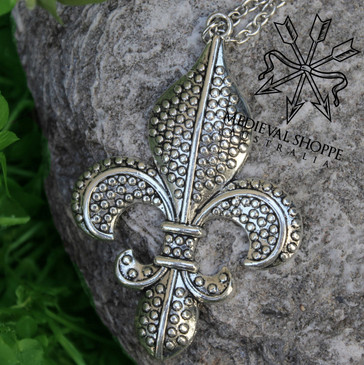-
Product Description

3.1cm x 2.1cm
SILVER PLATED
The FLEUR-DE-LIS (Fr. “lily flower”), is an heraldic device, very widespread in the armorial bearings of all countries, but more particularly associated with the royal house of France. The conventional fleur-de-lis represents very imperfectly three flowers of the white lily (Lilium) joined together, the central one erect, and each of the other two curving outwards. The fleur-de-lis is a common device in ancient decoration, notably in India and in Egypt, where it was the symbol of life and resurrection, the attribute of the god Horus. It is common also in Etruscan bronzes. It is uncertain whether the conventional fleur-de-lis was originally meant to represent the lily or white iris—the flower-de-luce of Shakespeare—or an arrow-head, a spear-head, an amulet fastened on date-palms to ward off the evil eye, &c. In Roman and early Gothic architecture the fleur-de-lis is a frequent sculptured ornament. As early as 1120 three fleurs-de-lis were sculptured on the capitals of the Chapelle Saint-Aignan at Paris. The fleur-de-lis was first definitely connected with the French monarchy in an ordonnance of Louis le Jeune (c. 1147), and was first figured on a seal of Philip Augustus in 1180. The use of the fleur-de-lis in heraldry dates from the 12th century, soon after which period it became a very common charge in France, England and Germany, where every gentleman of coat-armour desired to adorn his shield with a loan from the shield of France, which was at first d’azur, semé de fleurs de lis d’or. In February 1376 Charles V. of France reduced the number of fleurs-de-lis to three—in honour of the Trinity—and the kings of France thereafter bore d’azur, à trois fleurs de lis d’or. Tradition soon attributed the origin of the fleur-de-lis to Clovis, the founder of the Frankish monarchy, and explained that it represented the lily given to him by an angel at his baptism. Probably there was as much foundation for this legend as for the more rationalistic explanation of William Newton (Display of Heraldry, p. 145), that the fleur-de-lis was the figure of a reed or flag in blossom, used instead of a sceptre at the proclamation of the Frankish kings. Whatever be the true origin of the fleur-de-lis as a conventional decoration, it is demonstrably far older than the Frankish monarchy, and history does not record the reason of its adoption by the royal house of France, from which it passed into common use as an heraldic charge in most European countries. An order of the Lily, with a fleur-de-lis for badge, was established in the Roman states by Pope Paul III. in 1546; its members were pledged to defend the patrimony of St Peter against the enemies of the church. Another order of the Lily was founded by Louis XVIII. in 1816, in memory of the silver fleurs-de-lis which the comte d’Artois had given to the troops in 1814 as decorations; it was abolished by the revolution of 1830.
-
Product Reviews
-
Find Similar Products by Category









